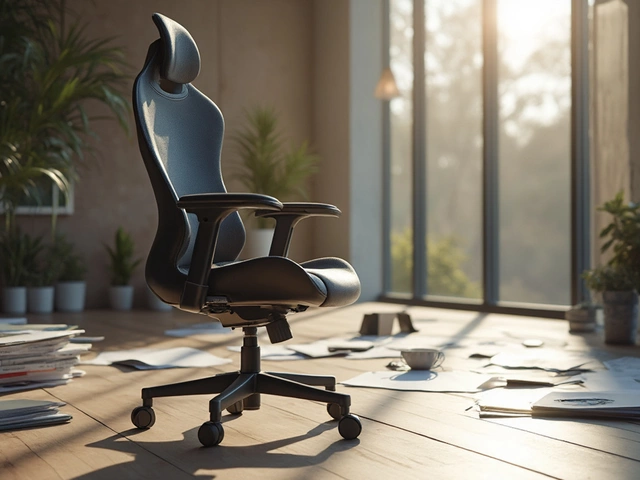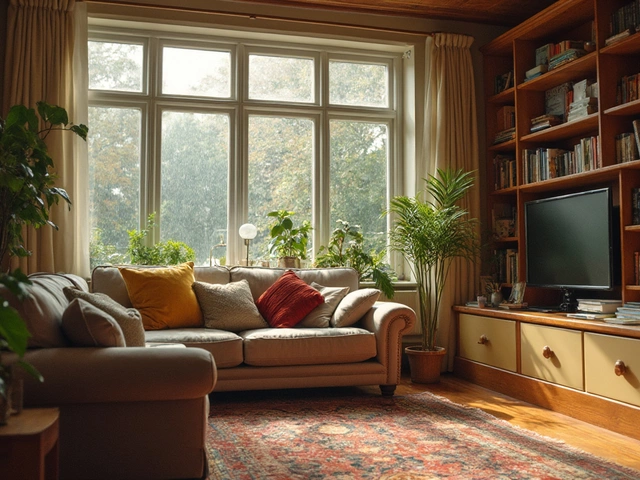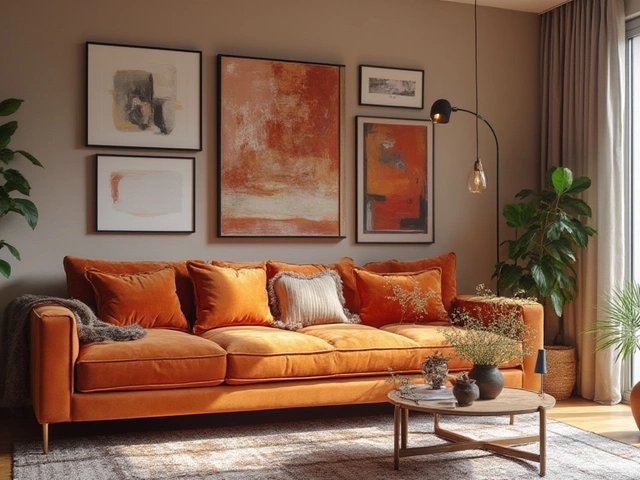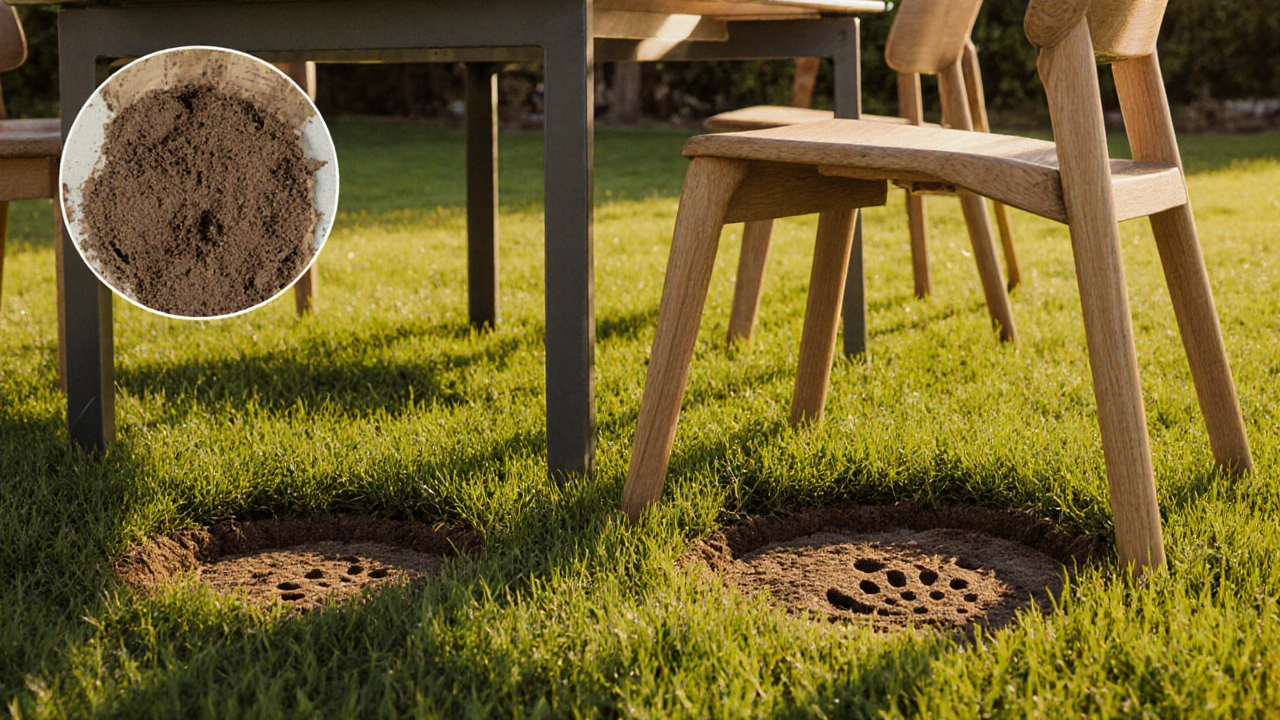 8
Oct,2025
8
Oct,2025
Patio Furniture Grass Protection Calculator
Recommended Protection Method
Adjust settings to see different recommendations
Material Comparison
Outdoor Rug
Breathable, UV-resistant, great for moderate weights
$3-$5/sq ftRubber Mat
Heavy-duty, excellent cushioning, best for heavy furniture
$6-$9/sq ftPlastic Mat
Lightweight, affordable, but less durable
$1-$2/sq ftKeeping your lawn looking lush while enjoying outdoor seating can feel like a balancing act. When heavy chairs or tables sit on grass, the soil gets compacted, the blades turn brown, and you end up with unsightly patches. The good news? A few simple steps and the right covering material can let you relax on your patio without turning your yard into a dead zone.
Key Takeaways
- Use breathable, UV‑stable materials like outdoor rugs or rubber mats to shield the grass.
- Place furniture pads or glides under each leg to spread weight evenly.
- Rotate furniture every few weeks to prevent long‑term compaction.
- DIY options such as pallet platforms or recycled carpet squares work well on a budget.
- Regular aeration and watering around the protected area keep the soil healthy.
Patio furniture grass protector is a lightweight, weather‑resistant layer placed between outdoor furniture and lawn grass to prevent soil compaction, UV damage, and moisture loss. It acts as a buffer, letting you move chairs around without leaving permanent footprints.
Why Protecting Grass Matters
Grass is a living carpet. When a heavy chair sits in one spot for weeks, the roots get crushed, air pockets disappear, and water can’t reach the soil. Over time, the affected area turns thin, yellow, and eventually bare. By adding a protective layer, you maintain:
- Soil structure: Even weight distribution keeps the soil porous.
- Moisture balance: Barriers slow down evaporation, giving roots more time to absorb water.
- Appearance: No more brown circles around your favorite table.
Top Materials to Cover Grass
Not all coverings are created equal. Below is a quick rundown of the most common options, each with its own strengths.
- Outdoor rug - Made from synthetic fibers like polypropylene, these rugs are UV‑stable, water‑draining, and come in a range of styles. They’re breathable, so grass can still get air.
- Rubber lawn mat - Typically 1/8‑inch thick, rubber mats offer excellent cushioning and slip resistance. They’re ideal for heavy furniture.
- Plastic lawn mat - Lightweight and inexpensive, these are good for temporary setups but can trap heat.
- Weed‑barrier fabric - A thin, porous sheet that protects soil while letting water seep through. Often used under other layers for extra security.
- Furniture pads - Small rubber or felt pads placed under each leg to spread the load.
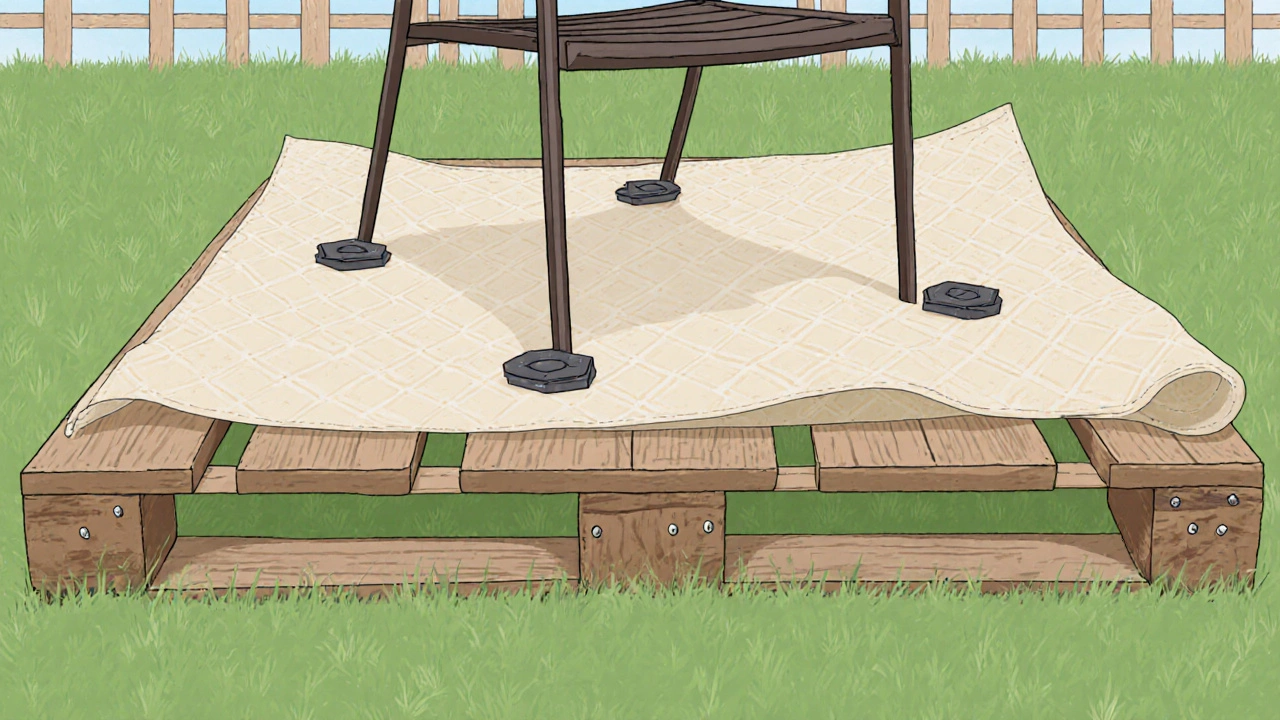
DIY Solutions on a Budget
If you love a hands‑on project, these homemade options work just as well as store‑bought products.
- Recycled carpet squares: Cut old indoor carpet into 12‑inch squares, back them with a piece of weed‑barrier fabric, and place under each chair leg.
- Pallet platform: Lay two pallets side by side, add a sheet of landscape fabric on top, then sprinkle a thin layer of rubber mulch. This creates a semi‑permanent deck that’s easy to move.
- Interlocking foam tiles: Foam tiles designed for play areas are moisture‑resistant and can be assembled into any shape.
Step‑by‑Step Installation Guide
- Measure the footprint of each piece of furniture. Add a 6‑inch buffer on all sides for movement.
- Choose your covering material. For most yards, an outdoor rug paired with furniture pads works best.
- Clear the area of debris and mow the grass to about 2‑3 inches.
- If using a rug, place a sheet of weed‑barrier fabric underneath to prevent slippage and add extra protection.
- Lay the rug flat, smoothing out wrinkles. Ensure the rug’s edges are tucked under the fabric to avoid tripping.
- Attach ground stakes or adhesive corner protectors to keep the rug from blowing away on windy days.
- Place furniture pads on each leg, then position your chairs and tables on top of the rug.
- Step back and check that the setup feels stable. Adjust as needed.
Maintenance Tips to Keep Grass Healthy
Even with protection, the lawn still needs care.
- Aerate regularly: Use a garden fork or a core aerator around the protected zone every 2‑3 months to relieve any lingering compaction.
- Water wisely: Water early in the morning so the soil dries before evening. This prevents fungal growth under the rug.
- Rotate furniture: Move the pieces at least once a month to give grass a chance to recover.
- Clean the cover: Brush off leaves and debris from rugs or mats weekly to maintain drainage.
- Inspect for wear: Replace worn‑out pads or cracked mats to avoid sudden leaks that could damage the grass.
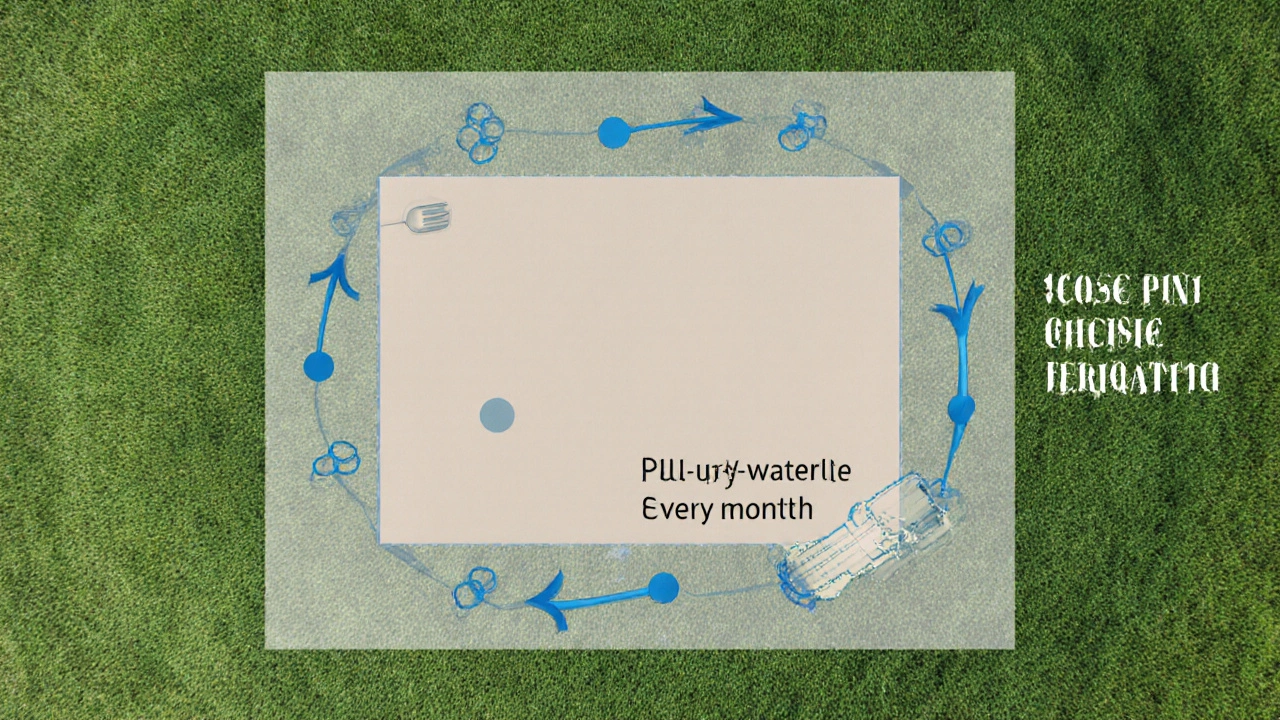
Buying Guide - Comparison of Popular Grass Covers
| Feature | Outdoor Rug | Rubber Mat | Plastic Lawn Mat |
|---|---|---|---|
| Breathability | High - porous weave | Medium - perforated surface | Low - solid sheet |
| Weight support (lbs) | Up to 200 per square foot | Up to 400 per square foot | Up to 150 per square foot |
| UV resistance | Excellent (10‑year warranty) | Good (5‑year warranty) | Fair (3‑year warranty) |
| Ease of cleaning | Shake out or hose down | Hose down, wipe spots | Hose down, can trap dirt |
| Cost per sqft | $$ - $3‑$5 | $$$ - $6‑$9 | $ - $1‑$2 |
For most homeowners, an outdoor rug strikes the best balance of look, breathability, and price. Choose a rubber mat if you have particularly heavy furniture or want extra cushioning. Plastic mats work for short‑term events or rental properties.
Common Mistakes to Avoid
- Skipping the weed‑barrier layer - this can lead to slipping and water pooling.
- Using non‑UV‑rated fabrics - they fade and become brittle under sun exposure.
- Leaving furniture in one spot year‑round - compaction builds up quickly.
- Choosing a cover that traps heat - it can scorch the grass underneath.
Frequently Asked Questions
Can I use a regular indoor rug outdoors?
Most indoor rugs aren’t designed for UV exposure or moisture, so they’ll fade quickly and can mildew. Stick to rugs labeled as outdoor‑rated or made from polypropylene, polyester, or solution‑dyed acrylic.
How often should I rotate my patio furniture?
Aim for a rotation every 4‑6 weeks. Even a small shift of a foot or two helps distribute weight and gives the grass a chance to breathe.
Do I need to water the grass more often under a rug?
Yes, a bit more. The rug reduces direct rainfall onto the soil, so give those spots an extra half‑hour of watering each week, ideally early in the morning.
What’s the best way to secure a rug on a windy day?
Lay a piece of landscape fabric beneath the rug, then tack down the edges with ground stakes or use double‑sided outdoor carpet tape.
Can I blend a DIY pallet platform with a commercial rug?
Absolutely. The pallet raises the rug off the soil, improving drainage, while the rug adds aesthetic appeal. Just ensure the pallet is level and the fabric underneath prevents weeds.
